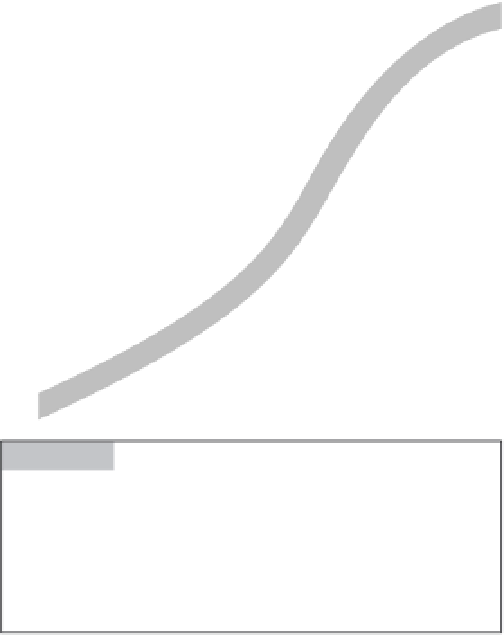Environmental Engineering Reference
In-Depth Information
Flint
et al
. (
2001a
) provided an instructive
description of how the conceptual model of
water movement through the unsaturated zone
evolved over time as new data were collected
and analyzed. A brief overview of this work is
presented in
Section 9.4.2
.
excellent discussions of hydrologic processes
in mountain and basin settings can be found
in Feth (
1964
), Wilson (
1980
), Wilson and Guan
(
2004
), and Stonestrom and Harrill (
2007
).
Methods for estimating mountain-front
recharge are discussed in some detail in Wilson
(
1980
) and Wilson and Guan (
2004
). Because
focused recharge from streams is an import-
ant process, methods such as water budget;
9.4.1 Western Mountain Ranges
The Western Mountain Ranges region consists
of tall mountains and narrow intermontane
valleys. The mountains generally consist of
low-permeability rock with a thin covering of
soil. Groundwater exists in the rock matrix, but
most available water occurs in fractures. The
aperture, density, and connectivity of the frac-
tures control the storativity and transmissivity
of the rock. Low yielding wells, screened in bed-
rock, are common for domestic water supplies.
The most productive areas in this region are the
intermontane drainages where alluvial depos-
its are present. The Salt Lake Valley in north
central Utah, for example, contains import-
ant highly productive aquifers (Manning and
Solomon,
2004
).
Snowfall at high elevations is the primary
source of water in this region. Snow accumu-
lates during the winter, and water is released
from the snowpack as temperatures rise in the
spring. Recharge to the mountains occurs both
in diffuse and focused forms. Water can infil-
trate the mountain block or runoff. Mountain
streams can be both gaining and losing streams
over different reaches.
Figure 9.2
shows a sche-
matic of the hydrology of a mountain and adja-
cent basin aquifer. Mountain-front recharge
refers to the accretion of water in a basin aqui-
fer adjacent to the mountain (Wilson,
1980
).
That accretion occurs in two forms: focused
recharge from streams that flow from the
mountain and subsurface flow from the moun-
tain. The latter form is sometimes referred to
as mountain-block recharge (Wilson and Guan,
2004
; Manning and Solomon,
2004
). According
to definitions given in
Chapter 1
, this phe-
nomenon is interaquifer flow rather than
recharge. The phenomenon is also referred to
as underflow; this flow is referred to as subsur-
face mountain-block discharge in this chap-
ter. Regardless of differences in terminology,
(a)
Mountain block
Basin
Ephemeral
streams
Mountain-front
recharge zone
(b)
Recharge from
streamflow
Subsurface
mountain block
discharge
Mountain block
Basin aquifer
Figure 9.2
Schematic diagrams showing map view (a)
and cross section (b) of mountain block and basin aquifer.
Water flows from the mountain block to the aquifer as
focused recharge from ephemeral streams that drain
the mountain block (mountain front recharge) and as
subsurface discharge, or interaquifer flow (after Wilson
(
1980
) and Wilson and Guan (
2004
)).






















